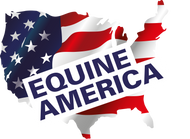Navicular Syndrome in Horses

Navicular syndrome, or navicular disease, is a common cause of forelimb lameness in horses, particularly performance horses. Navicular Disease can be found in all breeds and ages, but is most common in Thoroughbreds, Warmbloods and Quarter horses, usually 4 to 15 years old. Poor foot conformation, including contracted heels and small boxy feet are commonly found in horses with navicular syndrome.
The navicular bone is a small boat shaped bone, located within the hoof capsule and historically this was thought to be the cause of the problem. With improvements in our ability to image the foot, we now know that problems can arise in the navicular bone itself, the bursa (the joint capsule around the bone), the deep digital flexor tendon (which runs over the navicular bone), the surrounding ligaments (collateral and impar ligaments) or a combination of these structures.
To diagnose navicular disease, your Vet will perform a lameness examination which may include nerve and joint blocks and imaging, often including X-ray and/or MRI to locate the cause of the pain.
Once a diagnosis has been made, your Vet will be able to discuss treatment options, which will likely include remedial farriery and medication, with an appropriate exercise programme tailored to your horse.
The Role of Nutrition in Supporting Navicular Disease
As we have already discussed, medication and remedial farriery will pay key roles in treating the horse with navicular disease, but nutrition can also play a supporting role. Key areas to focus on nutritionally include:
1. Support for the Anti-Inflammatory Processes
Key ingredients including Boswellia and MSM will provide support for the natural anti-inflammatory processes to support joint comfort. Omega 3 Fatty Acids, such as found in Linseed Oil, can also be helpful in supporting the anti-inflammatory processes. Antioxidants, also play a crucial role in reducing oxidative stress.
2. Joint Support
Navicular disease directly impacts the tissues and structures within the hoof. Supplements with key chondroprotective ingredients, such as Glucosamine and Chondroitin can provide support for joint health. Collagen provides support for the soft tissues (tendons and ligaments).
3. Hoof Health
Remedial farriery is vital for supporting horses with navicular disease but to do this the horse needs to grow quality horn. Ensuring the horse has a balanced diet with the essential vitamins and minerals is key, but a hoof supplement containing Biotin and key amino acids such as Methionine can support healthy hoof growth.
5. Balanced Diet for Weight Management
Obesity is known to put additional stress on the feet, and if lameness has caused a reduction in exercise, ensuring the diet is balanced without additional calories is key. Ensuring your horse receives a balanced forage-based diet, containing the key vitamins and minerals is vital for overall health and wellbeing.
Conclusion
There is still much to learn about navicular syndrome but interestingly the navicular apparatus has the same structural adaptations to mechanical stress as the human Achilles tendon complex (Osborn et al, 2021) and studying these similarities may help advance our knowledge.
Navicular syndrome can be a challenging condition to manage but a well-rounded approach that includes appropriate veterinary care, farriery, and nutritional support can significantly improve the quality of life for affected horses. Our team of experienced Vets and Nutritionists are available to discuss your horse and their diets with you.
References:
Osborn et al. (2021) The Equine Navicular Apparatus as a Premier Enthesis Organ: Functional Implications. Veteriunary Surgery; 50:713-728. DOI: 10.1111/vsu.13620
 Skip to content
Skip to content

